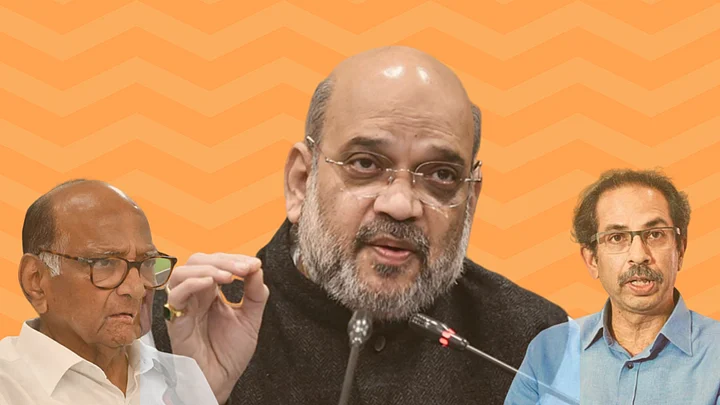When someone is called a ‘Chanakya’, it means he or she can control the field of power. Such a person is amoral, pragmatic, understands ‘human nature’ and knows how to manipulate it. Ultimately, a ‘Chanakya’ is a master tactician who uses every means possible to achieve the outcome they want. And, the methods they use are popularly known as ‘Chanakya Niti’.
Chanakya’s ‘Arthashastra’: An Object of Nationalist Pride
The idea of ‘Chanakya’ comes from a supposed ‘real’ historical character, a Brahmin advisor to the first Mauryan emperor. Popular culture, aided by nationalist historiography, tells us that Chanakya single-handedly masterminded the overthrow of the Nanda king, and placed his protégé Chandragupta on the throne of Magadha.
Chanakya, also known as Vishnugupta and Kautilya, is supposed to have composed the Arthashastra, a treatise on statecraft, that was rediscovered in 1909, when R Shama Sastry, the chief librarian of Mysore State, published the first printed version of the Sanskrit text. Since then, it has become a source of great pride for nationalists, who see in it an elegant and complex theory of politics, which rivals any produced in the West.
That is why, Kautilya’s Arthashastra has been repeatedly compared to Machiavelli’s The Prince, for its clinical approach to the exercise of power.
The ‘Arthashastra’ believes that a king should use every trick to remain in power, including surveillance, espionage, propaganda, control of natural resources, and continuous expansion. It effectively says that power has no morality.
Historians have questioned whether Arthashastra was actually written by a single person, or even whether it existed in Mauryan times. Writing in 1961, Romila Thapar argued that there are many commonalities between Asokan edicts and Arthashastra, which suggests that the core part of the text existed during the Mauryan empire. Most historians today agree that the text was written over several centuries, and took its final shape during Gupta empire. Kautilya’s original text probably was a slim volume, which dealt only with the art of punishment.
The Idea of Chanakya
Several scholars believe that Kautilya and Chanakya were two different people. In fact, some believe that the historical Chanakya simply did not exist. The Sri Lankan Sanskritist Patrick Olivelle, has recently argued that Chanakya was an imaginary construct of the Gupta period. It was an ‘ideal-type’ created to place the super-intelligent ‘Brahmin advisor’ as a necessary aspect of kingship.
There are no historical records that prove the existence of a real Chanakya. Whatever we know today comes from texts and traditions, recorded several centuries after the Mauryas. Earliest amongst them is the Sanskrit play Mudrarakshasa, believed to have been written sometime between the 4th and 7th century CE, 700-1000 years after Chandragupta. Other sources, like the Mahavamsa, was written in the 5th century, Kathasaritsagara was written in the 11th century, and Hemachandra’s Parishistaparvan was written in the 12th century.
So, the contemporary idea of Chanakya is a composite of several legends, traces of historical facts and interpreted texts.
But, for most people, it is important that they treat Chanakya as a really existing historical personage. The imagined Chanakya upholds certain typical upper-caste notions of the nation-state. He was a Brahmin, supposedly destined to be a ‘power behind the throne’, who searched and found Chandragupta in the wilderness, trained him and then, finally, made him king.
Chanakya’s policies, his ‘Chanakya Niti’, represent the ideal of the ‘hard-state’, which exercises power ruthlessly, is constantly on the lookout for enemies of the state, and rules through punishment and propaganda.
It fits in perfectly with the contemporary valourisation of the macho idea of ‘might is right’. It, simultaneously, bolsters the notion that India’s ancient past was a golden age of ideas and thought, that was equal, if not superior, to anything in the rest of the world.
Valourising ‘Chanakya Niti:’ Upholding Amoral Politics
Although Chanakya was a great hero for India’s nationalists, including Jawaharlal Nehru, his importance has increased sharply along with the rise of political Hindutva. The ‘details’ of Chanakya’s life became part of public culture, when Doordarshan commissioned a 48-episode series on him in 1991-92. Scholar-journalist Nalin Mehta, in his research paper on the serial, writes how it projected Chanakya as a ‘nationalist’ who invoked ‘Bharat Mata’ to fight against the ‘anti-national’ Nanda. Mehta describes how the serial re-imagines the Arthashastra as a nationalist treatise, without any foundation in the actual text.
Today, national media has taken this idea forward, positioning Chanakya as the original political mastermind. When news anchors equate Amit Shah or Sharad Pawar with Chanakya, they valourise the amoral, pragmatic politics espoused in the Arthashastra.
It is an acknowledgment that politics can no longer be moral; it must be fought through every means available.
Such an attitude, which finds virtue in amorality, treats power as an end in itself. It goes against the basic founding principles of our democracy where the people of India gave themselves a constitution that was meant to secure for all its citizens, justice, liberty and equality. Treating Chanakya as a hero is to denigrate the citizen.
(The author was Senior Managing Editor, NDTV India & NDTV Profit. He now runs the independent YouTube channel ‘Desi Democracy’. He tweets @AunindyoC. This is an opinion piece. The views expressed above are the author’s own. The Quint neither endorses nor is responsible for them.)
(At The Quint, we question everything. Play an active role in shaping our journalism by becoming a member today.)


